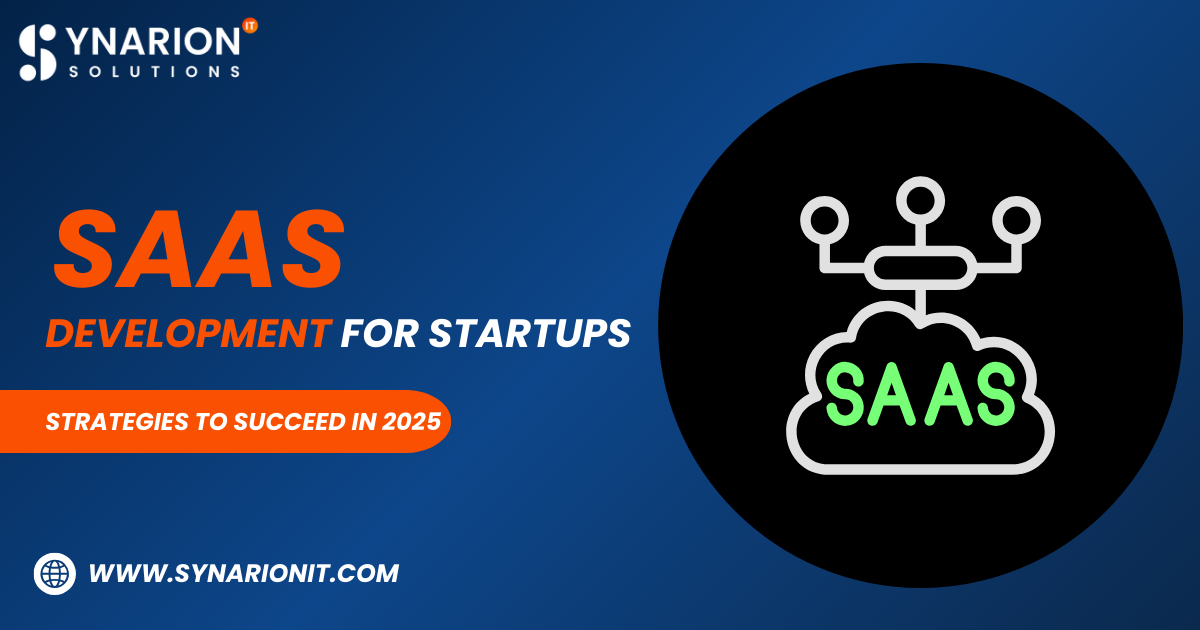The startup ecosystem is more competitive than ever. Every year, thousands of entrepreneurs launch businesses with the hope of building something big. But in 2025, one trend is crystal clear: Software as a Service (SaaS) is shaping the future of startups.
SaaS products allow businesses to deliver services over the internet without the need for physical infrastructure or one-time installations. Think of tools like Zoom, Slack, HubSpot, and Canva—these are SaaS platforms that have become essential for millions of users worldwide.
For startups, SaaS offers flexibility, scalability, and recurring revenue. But building a successful SaaS product isn’t easy. That’s why many new businesses partner with a trusted SaaS Development Company to transform their ideas into market-ready solutions.
In this blog, we’ll explore why SaaS is the best path for startups, strategies to succeed in 2025, and how to navigate challenges while building the next big SaaS product.
Why SaaS is Perfect for Startups
SaaS has become one of the fastest-growing business models, and here’s why it’s particularly attractive for startups:
- Low Upfront Cost
Unlike traditional software that requires big investments, SaaS is cloud-based, reducing costs for both businesses and customers. - Scalability
Startups can start small and expand their SaaS product as they grow. Adding new users or features is much easier with cloud infrastructure. - Recurring Revenue
Subscription-based pricing creates predictable monthly or yearly income, giving startups financial stability. - Global Reach
SaaS products are accessible anywhere, making it possible for startups to serve international markets right from the start. - Flexibility for Innovation
SaaS allows continuous updates and improvements, ensuring startups can quickly adapt to market changes.
Strategies for SaaS Development Success in 2025
To succeed with SaaS in 2025, startups need more than just a good idea. They need a solid strategy. Here are some proven steps:
1. Start with a Real Problem
Every successful SaaS product solves a real pain point. Startups must identify the challenges businesses or individuals face and build a solution that makes life easier. The product should be practical, useful, and unique.
2. Define Your Target Audience
Trying to serve everyone often leads to failure. Instead, startups should focus on a niche market. For example, Slack started as a communication tool for small teams and later expanded into enterprise collaboration.
3. Choose the Right Tech Stack
The technology behind SaaS matters. A professional SaaS Development Company helps startups choose the best frameworks, programming languages, and cloud platforms to ensure scalability and security.
4. Adopt a Cloud-First Approach
With the rise of 5G and global connectivity, cloud-based SaaS solutions are more efficient and accessible. Cloud-first development also supports multi-device access, making products more user-friendly.
5. Focus on User Experience (UX)
In 2025, customers won’t tolerate complicated apps. SaaS platforms must have a simple, clean, and intuitive interface. A good UX can be the difference between users adopting your product or abandoning it.
6. Implement Strong Security
Cybersecurity is a major concern. Data leaks or weak security can destroy a startup’s reputation overnight. SaaS products should include secure login, encryption, and compliance with international data protection laws.
7. Build a Minimum Viable Product (MVP)
Instead of building everything at once, startups should launch an MVP with core features. This helps validate the idea, gather user feedback, and save money before scaling up.
8. Flexible Pricing Models
Freemium, tiered pricing, and pay-as-you-go plans work well in SaaS. Startups should test different models to see what resonates with their audience.
9. Leverage AI and Automation
AI-driven personalization, chatbots, and predictive analytics are shaping SaaS in 2025. Startups that integrate these technologies will stand out.
10. Plan for Scalability from Day One
SaaS products should be ready to grow as user demand increases. Partnering with an expert SaaS Development Company ensures startups build scalable architecture.
Key Features of a Successful SaaS Product
To attract and retain customers, SaaS startups should include:
- Easy Onboarding: Simple sign-up and clear guidance.
- Multi-Device Support: Access on desktop, mobile, and tablets.
- Integration Capabilities: Connect with popular tools like Google Drive, Zoom, or CRM platforms.
- Analytics & Reporting: Provide valuable insights to users.
- Collaboration Tools: Teamwork features like file sharing or chat.
- Customizable Settings: Give users flexibility to adapt the software to their needs.
- Reliable Performance: Fast loading times and zero downtime.
These features not only improve the user experience but also build customer loyalty.
Benefits of Partnering with a SaaS Development Company
While some startups try to build SaaS solutions in-house, working with a professional SaaS Development Company offers significant benefits:
- Technical Expertise: They understand the latest tools, frameworks, and security measures.
- Faster Time-to-Market: Experts can help launch the product quicker, giving startups a competitive edge.
- Customization: Solutions are tailored to the startup’s unique business model.
- Scalability & Flexibility: SaaS companies ensure products can grow as user demand increases.
- Ongoing Support: Maintenance, updates, and bug fixes are handled by professionals.
This partnership allows startups to focus on business growth while experts manage the technical side.
Challenges in SaaS Development and How to Overcome Them
SaaS is promising, but startups must also be aware of common challenges:
- High Competition: The SaaS market is crowded. Solution: Focus on niche markets and deliver unique value.
- Customer Retention: Keeping users engaged is tough. Solution: Provide great support and continuous improvements.
- Scalability Issues: Poor infrastructure can cause crashes. Solution: Work with an experienced SaaS Development Company to build robust architecture.
- Security Concerns: Data protection is critical. Solution: Implement advanced security protocols from day one.
- Pricing Dilemmas: Choosing the wrong model can affect growth. Solution: Test multiple pricing strategies.
Overcoming these challenges requires strategy, innovation, and expert guidance.
The Future of SaaS Development in 2025
The SaaS industry continues to evolve. Here are some future trends startups should prepare for:
- AI-Powered SaaS: Personalization, automation, and data insights will be driven by artificial intelligence.
- Vertical SaaS: Industry-specific SaaS products (for healthcare, education, finance, etc.) will grow rapidly.
- Low-Code/No-Code Platforms: Allowing faster development and customization.
- Global Expansion: Multi-language and multi-currency support will be standard.
- Sustainability Focus: Cloud providers and SaaS companies will prioritize eco-friendly practices.
Startups that adapt to these trends will have the best chance of thriving in 2025 and beyond.
Final Thoughts
SaaS has opened up enormous opportunities for startups. It offers scalability, recurring revenue, and global reach, making it one of the best business models in 2025. But success in SaaS requires more than just an idea—it needs the right strategies, features, and technology.
By identifying real problems, focusing on user experience, ensuring security, and building scalable solutions, startups can create SaaS products that make a lasting impact. Partnering with a skilled SaaS Development Company gives startups the expertise and support they need to turn ideas into successful, revenue-generating products.
In the competitive world of 2025, startups that embrace SaaS development will not only survive but thrive, shaping the future of digital innovation.



